Difference between revisions of "Sustainable Energy Vehicle Competition"
| Line 146: | Line 146: | ||
= Procedure = | = Procedure = | ||
The power storage device and power sources will be tested individually. The results of the tests will be used in determining the best power source for the sustainable energy vehicle. | |||
The power storage device and power sources will be tested individually. The results of the tests will be used in determining the best power source | |||
== 1. Testing the Power Storage Device == | == 1. Testing the Power Storage Device == | ||
During this part of the procedure, a capacitor will be charged and discharged with a music voltmeter. The current of the circuit with two capacitors, a music voltmeter, and a multimeter in series and in parallel will be measured. | |||
=== Charging a Capacitor | === Charging a Capacitor === | ||
# The circuit in Figure | # The circuit in Figure 12 will be created to charge a capacitor. Connect an alligator clip to each of the cables coming out of the 3 V power supply. Red is positive and black is negative. | ||
#; [[Image:Lab 10 Figure 8.png|thumb|500px|center|Figure 12: Circuit to Charge a Capacitor]] | |||
# Connect one of the unconnected alligator clips to one of the leads of the ammeter (the multimeter set to measuring current). | # Connect one of the unconnected alligator clips to one of the leads of the ammeter (the multimeter set to measuring current). | ||
# Connect the rest of the unconnected cables (one from the ammeter and one alligator clip) in series to the leads of the capacitor with the polarity indicated | # Connect the rest of the unconnected cables (one from the ammeter and one alligator clip) in series to the leads of the capacitor with the polarity indicated. | ||
# Charge the capacitor until the current in the circuit is | # Charge the capacitor until the current in the circuit is 0 A. | ||
# Discharge the charged capacitor by connecting it to the music voltmeter. The capacitor is discharging when the music voltmeter audibly plays a song. | # Discharge the charged capacitor by connecting it to the music voltmeter. The capacitor is discharging when the music voltmeter audibly plays a song. | ||
=== Capacitors in Series and Parallel === | |||
# Charge two capacitors with the method used to charge one capacitor. | |||
# Wire the two capacitors, the music voltmeter, and the multimeter in series. | |||
## Refer to the schematic presented earlier to wire a circuit in series. | |||
## Remember to check for the proper polarity, otherwise the circuit will not run. | |||
# Record the current produced by the circuit in series. | |||
# Repeat steps 1-3, but wiring the circuit in parallel. | |||
== 2. Testing the Power Sources == | == 2. Testing the Power Sources == | ||
One type of renewable power source will be assigned and analyzed per team, as determined by the TA. Both voltage and current must be measured and recorded, and power must be calculated. | |||
=== Wind Turbine === | === Wind Turbine === | ||
| Line 201: | Line 182: | ||
# Adjust the position of the solar panel to find the highest voltage and current that can be generated. | # Adjust the position of the solar panel to find the highest voltage and current that can be generated. | ||
# Calculate and record the power generated by the solar panel and give the information to a TA. | # Calculate and record the power generated by the solar panel and give the information to a TA. | ||
=== Data Analysis === | |||
# The TA will display the power data from each renewable energy source on the board. Based on the power output of each renewable energy source and the analysis of the circuits in series and parallel, determine the best power source and circuit design to power a sustainable energy vehicle with two capacitors. | |||
'''<span style="color: red">Caution!</span> The heat lamps and solar panels may become extremely hot when used for a long duration of time. Do not touch them immediately after use and turn them off when not in use.''' | '''<span style="color: red">Caution!</span> The heat lamps and solar panels may become extremely hot when used for a long duration of time. Do not touch them immediately after use and turn them off when not in use.''' | ||
== Competition Rules == | |||
The competition rules must be followed at all times during the competition. Violation of any of these rules will result in the disqualification of the design. | The competition rules must be followed at all times during the competition. Violation of any of these rules will result in the disqualification of the design. | ||
| Line 222: | Line 203: | ||
<p style="text-align:right">(5)</p> | <p style="text-align:right">(5)</p> | ||
In (5), distance is distance traveled in feet, time is the travel time in seconds, and cost is the cost of the design in dollars. | In (5), distance is distance traveled in feet, time is the travel time in seconds, and cost is the cost of the design in dollars. | ||
=== 3. Sustainable Energy Vehicle Competition === | |||
# Assess the materials and consider the data from 1. Testing the Power Storage Device and 2. Testing the Power Sources. Choose materials for the vehicle design, keeping in mind the competition ratio. Make preliminary sketches during this process. | # Assess the materials and consider the data from 1. Testing the Power Storage Device and 2. Testing the Power Sources. Choose materials for the vehicle design, keeping in mind the competition ratio. Make preliminary sketches during this process. | ||
| Line 233: | Line 214: | ||
# Give the total cost of the design to a TA. The TA will provide the competition ratio obtained. | # Give the total cost of the design to a TA. The TA will provide the competition ratio obtained. | ||
'''Before entering the competition, test the motor and cable. Make sure the motors turn in the desired direction of travel.''' | '''Before entering the competition, test the motor and cable. Make sure the motors turn in the desired direction of travel.''' | ||
= Assignment = | = Assignment = | ||
Revision as of 15:32, 21 October 2021
Objective
The experimental objective of this lab is to evaluate different sources of renewable energy and use the results of that evaluation to design a vehicle that is powered by a renewable energy source or a capacitor that is charged by a renewable energy source. The design will be entered in a competition that is judged by a ratio that uses distance traveled, travel time, and cost. The highest ratio wins.
Overview
From sails to power boats, windmills to pump water, or water-driven wheels to power machinery that mills grains, humans have been using renewable energy sources for millennia. A significant amount of our energy production comes from non-renewable resources, such as oil, natural gas, and coal. The environmental and health impacts of burning fossil fuels have prompted greater interest and investment in renewable energy sources, including solar, wind, and hydroelectric power though hydroelectric power is not considered in this lab. Scientists and engineers must address concerns about the inability of some renewable sources, notably solar power and wind power, to generate power consistently so there is equal interest in developing energy storage devices that can operate at grid-scale or hold sufficient energy to power entire communities for an extended time after being charged by a renewable energy source.
Types of Renewable Energy
Renewable energy is a type of energy that can be harnessed from naturally replenished resources. Some examples of this are sunlight, wind, and water. There are many benefits of using renewable energy. They are clean energy sources, and they come from an abundant source that do not become depleted. If these renewable resources can be harnessed efficiently, they can solve the problems with using non-renewable energy sources, such as fossil fuels (NextEra Energy Resources, 2012).
Solar Power
Sunlight, like any other type of electromagnetic radiation, contains energy. Typically, when sunlight hits an object, the energy that it contains is converted into heat. Certain materials can absorb and convert that energy into an electrical current. In this form, sunlight can be used as a power source or stored for later use.
Solar panels are devices that generate electrical current from sunlight. The panels contain a crystalline material that absorbs and converts the sunlight into electricity. The crystalline material has a repeating structure formed by a network of covalent bonds where electrons are shared by atoms within the crystal. Traditional solar cells are made from crystalline silicon.
To produce a current, there must be a difference in the concentration of electrons between one area and another to cause their flow. In a silicon solar cell, a concentration difference is created using two types of silicon, p-type and n-type. The p-type silicon is created by adding atoms, such as boron, that have one less electron in their valence energy level than silicon has. As a result, a vacancy of electrons, or a hole, forms. The n-type silicon is created by adding atoms that have one more electron in their valence energy level than silicon has so that there is an excess of electrons that can move around the crystal structure and create an electrical current. In a solar cell, p-type and n-type silicon are sandwiched together to create a p-n junction, as shown in Figure 1 (Locke, 2008). The p-type area is positively charged, and the n-type area is negatively charged.
When sunlight hits the silicon on the solar panel, the photons from the sunlight energize the electrons in the material. The electrons within the crystal move to a higher energy level, creating holes. If the p-type and n-type silicon are connected with a wire, the electrons will flow from the n-type layer to the p-type layer, and electrical current is generated.
Other materials have been used in the production of solar panels. Panels made from copper indium gallium (di)selenide (CIGS) have a smaller crystalline structure and are less expensive than silicon. CIGS panels are relatively flexible and can easily be shaped into flexible films. The use of CIGS to make solar panels is referred to as thin-film solar technology because of its flexible nature. CIGS panels are not as good at converting absorbed light into electrical current compared to silicon, but for mass production purposes, CIGS solar panels are the more cost effective approach to produce solar panels for frequent use (Locke, 2008). In the last decade, perovskite materials have also received attention for thin film technologies because of their competitive efficiency (Dey et al., 2021).
Wind Energy
Wind turbines are used to capture the wind’s energy and convert it into electrical energy. The blades on wind turbines are slanted so that as the wind passes over the blades, it creates an uneven pressure on each side, causing them to rotate. The spinning blades drive a low speed shaft connected to a gearbox. The gearbox converts the low speed rotation to a high speed rotation through a high speed shaft. The high speed shaft is connected to a brake and then into an electrical generator where mechanical energy is converted to electrical energy (Layton, 2011).
A basic electrical generator is made of permanent magnets on each side with a rectangular coil connected to a commutator, which is a rotary electrical switch (Figure 2). The two permanent magnets on each side create a magnetic field. As the rectangular coil spins mechanically, the magnetic field through the area of the coil changes, creating an alternating current through the coil. The commutator switches the polarity of the coil just as the polarity of the alternating current changes, creating a direct current. The current is then output from the wind turbine (Layton, 2011).
Energy Storage
Capacitors have many uses in circuits and signal processing. A capacitor is an electrical device that is used to store charge temporarily. Some capacitors can be used in place of a battery, but they operate very differently from a battery. A capacitor is charged by a voltage source logarithmically, as shown in Figure 3. In this lab, a capacitor will be used as the power source for the renewable energy vehicle.
Because of their design, capacitors are sensitive to the polarity of the voltage applied to them. The capacitors used in this lab must be connected with the proper polarity. In the lab, the capacitor’s negative lead must be connected to the negative applied voltage (Figure 4). Failure to do this will cause the capacitor to fail.
The energy a capacitor holds is proportional to the square of the voltage across the capacitor (1).
(1)
In (1), E is the energy, C is the capacitance, and V is the voltage.
Electrical Components
The design of a circuit determines its behavior. In this lab, one circuit design will increase the speed output of a motor and the other will increase the torque output of a motor. In electrical engineering, different electrical components are represented by different symbols. Figures 5A, 5B, and 5C show the symbols for a battery, capacitor, and DC source, respectively. They are all forms of energy storage devices.
Different arrangements of electrical components allow engineers to design different devices. Components, such as resistors, inductors, and capacitors, can be arranged in two different ways. In a series circuit, the element's components are connected end to end. The current in a series circuit remains the same in all the electrical elements. In a series circuit, as shown in Figure 6, the sum of the voltages across each element is equal to the voltage of the power source (2).
(2)
In (2), Vout is the voltage output and VA, VB, and VC represent the voltage of the individual components.
In a parallel circuit, as shown in Figure 7, the element's components are connected at opposing ends. The current that is supplied by the voltage source equals the current that flows though elements D and E. The voltage across the elements that are parallel is the same (3).
(3)
In (3), Vout is the voltage output and VD and VE represent the voltage of the individual components.
A digital multimeter will be used in this lab to read the current and voltage across components in circuits. Multimeters usually have two leads that directly touch two nodes in a circuit or the leads of an electrical component. Please read the Digital Multimeter Guidelines before performing this lab in order to understand how to properly operate a digital multimeter. Digital multimeters are indicated by different symbols in electrical circuits, depending on the value being measured by the multimeter. When measuring voltage, the multimeter is referred to as a voltmeter (Figure 8A). When measuring current, the multimeter is referred to as an ammeter (Figure 8B).
Depending on whether voltage or current is being measured in a circuit, the multimeter will be arranged in the circuit in a different manner. To measure the voltage across an electrical component, the multimeter must be placed in the circuit in parallel (Figure 9A). To measure the current across an electrical component, the multimeter must be placed in the circuit in series (Figure 9B).
After measuring the voltage and current across a component in a circuit, the electrical power output of that component can be calculated using the Power Law (4).
(4)
In (4), P is the power in Watts, I is the current in Amperes, and V is the voltage in Volts.
The motor provided in the lab is a 9V motor that will operate with voltages lower than 9V with reduced torque and speed (Figure 10). A motor with no load draws 9 mA, and a stalled motor draws well over 350 mA. Increasing the voltage provided to the motor increases the speed. Increasing the current increases the torque.
Design Considerations
- Which source yields the most voltage per unit cost?
- Which circuit configuration will provide the most voltage across the load? Parallel or series?
- Which aspects of the competition formula are most advantageous?
Materials and Equipment
Materials with Price List
| Material | Unit | Cost Per Unit |
|---|---|---|
| Horizon Wind-Turbine | 1 | $7.50 |
| Solar Panel | 1 | $10.00 |
| 1 F 5.5V Capacitor | 1 | $3.00 |
| Alligator Clip Set | 1 pair | $0.50 |
| LEGO Kit (Limit One Per Design) | 1 | $0.00 |
| LEGO to Alligator Clip Connector | 1 | $0.10 |
| Tape | 1 foot | $0.10 |
Equipment Used
- Horizon wind-turbine
- Sunforce 50013 1 W solar battery charger
- Adjustable table fan
- Heat lamp
- 3 V power supply
- Digital multimeter
- Music voltmeter
- 9 V DC motor
- A 1 F 5.5 V capacitor
- Three alligator clip sets
- Standard LEGO kit
- Lego to alligator clip connector
- Scissors
- Tape
Procedure
The power storage device and power sources will be tested individually. The results of the tests will be used in determining the best power source for the sustainable energy vehicle.
1. Testing the Power Storage Device
During this part of the procedure, a capacitor will be charged and discharged with a music voltmeter. The current of the circuit with two capacitors, a music voltmeter, and a multimeter in series and in parallel will be measured.
Charging a Capacitor
- The circuit in Figure 12 will be created to charge a capacitor. Connect an alligator clip to each of the cables coming out of the 3 V power supply. Red is positive and black is negative.
- Connect one of the unconnected alligator clips to one of the leads of the ammeter (the multimeter set to measuring current).
- Connect the rest of the unconnected cables (one from the ammeter and one alligator clip) in series to the leads of the capacitor with the polarity indicated.
- Charge the capacitor until the current in the circuit is 0 A.
- Discharge the charged capacitor by connecting it to the music voltmeter. The capacitor is discharging when the music voltmeter audibly plays a song.
Capacitors in Series and Parallel
- Charge two capacitors with the method used to charge one capacitor.
- Wire the two capacitors, the music voltmeter, and the multimeter in series.
- Refer to the schematic presented earlier to wire a circuit in series.
- Remember to check for the proper polarity, otherwise the circuit will not run.
- Record the current produced by the circuit in series.
- Repeat steps 1-3, but wiring the circuit in parallel.
2. Testing the Power Sources
One type of renewable power source will be assigned and analyzed per team, as determined by the TA. Both voltage and current must be measured and recorded, and power must be calculated.
Wind Turbine
- Connect the wind turbine to the music voltmeter using the alligator clips. Measure the voltage and current across the music voltmeter using the digital multimeter. The connections for measuring voltage and current across the music voltmeter are shown in Figures 9A and 9B.
- Adjust the position of the turbine blades against the wind to find the highest voltage and current that can be generated.
- Calculate and record the power generated by the turbine and give the information to a TA.
Solar Panel
- Connect the solar panel to the music voltmeter using the alligator clips. Place the solar panel near the heat lamp and measure the voltage and current across the music voltmeter using the digital multimeter.
- Adjust the position of the solar panel to find the highest voltage and current that can be generated.
- Calculate and record the power generated by the solar panel and give the information to a TA.
Data Analysis
- The TA will display the power data from each renewable energy source on the board. Based on the power output of each renewable energy source and the analysis of the circuits in series and parallel, determine the best power source and circuit design to power a sustainable energy vehicle with two capacitors.
Caution! The heat lamps and solar panels may become extremely hot when used for a long duration of time. Do not touch them immediately after use and turn them off when not in use.
Competition Rules
The competition rules must be followed at all times during the competition. Violation of any of these rules will result in the disqualification of the design.
- The renewable energy vehicle must carry its power storage device (e.g. capacitor)
- The capacitor can only be charged using the power sources provided
- Each design will only be allowed one trial
- Do not touch the leads of the charged capacitor - this will discharge the capacitor
- Do not connect the power storage device until immediately before the trial is run
- The trial will end after five minutes or when the car stops moving, whichever occurs first
- The highest competition ratio (CR) wins (5)
(5)
In (5), distance is distance traveled in feet, time is the travel time in seconds, and cost is the cost of the design in dollars.
3. Sustainable Energy Vehicle Competition
- Assess the materials and consider the data from 1. Testing the Power Storage Device and 2. Testing the Power Sources. Choose materials for the vehicle design, keeping in mind the competition ratio. Make preliminary sketches during this process.
- The design must hold the power storage device on top of it during the trials. Modify the design to fit the power storage device, keeping in mind where the wires will be when the trial is run. Prepare a cost list for the renewable energy vehicle based on the design and materials chosen. Have a TA sign the sketches and the cost list, indicating the total cost of the initial design.
- A TA will provide the materials needed for the design. If the design is modified during the construction, note the changes and describe the reasons for them. If the modifications required more materials to be used, update the cost list and have a TA approve it.
- Construct the vehicle based on the sketched design.
- Run the trial.
- Give the total cost of the design to a TA. The TA will provide the competition ratio obtained.
Before entering the competition, test the motor and cable. Make sure the motors turn in the desired direction of travel.
Assignment
Individual Lab Report
This lab report is optional and you will receive extra credit for submitting it. Follow the lab report guidelines laid out in the EG1004 Writing Style Guide in the Technical Writing section of the manual. Use the outline below to write this report.
- Define renewable energy
- Explain how solar panels and wind turbines work
- Explain the concept of the capacitor
- Discuss the advantages and disadvantages of all four energy sources
- Describe the renewable energy vehicle design and explain the choices made in the design
- Discuss the power sources and their power output. How did the voltage measurements of the power sources impact the design?
- Discuss whether one or two motors were used in design and why
- Specify the power source chosen for the design
- Discuss your design. Why did you choose the chassis or wheels? How did you factor in the constraints of the vehicle?
- Discuss how the design compared to the other designs
- Include screenshots of the lemon and potato battery circuits and pictures of the wind turbine or solar panel circuit
- Discuss what part of the lab you completed for your group and why it was important to the overall experiment.
Remember: Lab notes must be taken. Experimental details are easily forgotten unless written down. EG1004 Lab Notes paper can be downloaded and printed from the EG1004 Website. Use the lab notes to write the Procedure section of the lab report. At the end of each lab, a TA will scan the lab notes and upload them to the Lab Documents section of the EG1004 Website. One point of extra credit is awarded if the lab notes are attached at the end of the lab report. Keeping careful notes is an essential component of all scientific practice.
Team PowerPoint Presentation
Follow the presentation guidelines laid out in the EG1004 Lab Presentation Format in the Technical Presentations section of the manual. When preparing the presentation, consider the following points.
- Discuss why you chose your renewable energy source
- Discuss the power sources and their power output. How did the voltage measurements of the power sources impact the design?
- Discuss your design. Why did you choose the chassis or wheels? How did you factor in the constraints of the vehicle?
- How would the renewable energy vehicle be improved?
References
Layton, J.. "How Wind Power Works." How stuff works. Discovery, 2011. Retrieved 24 July 2012. <http://science.howstuffworks.com/environmental/green-science/wind-power.htm>.
Locke, S.. "How Does Solar Power Work." Scientific American. Scientific American, 2008. Retrieved 24 July 2012. <http://www.scientificamerican.com/article.cfm?id=how-does-solar-power-work>.
NextEra Energy Resources, LLC. "Benefits of Renewable Energy." NextEra Energy Resources. NextEra Energy Resources, 2012. Retrieved 24 July 2012. <http://www.nexteraenergyresources.com/content/environment/benefits.shtml>.
Perlman, Howard.. "Hydroelectric Power: How it Works." U.S. Geological Survey, 2016. Retrieved 4 Jan 2018. <https://water.usgs.gov/edu/hyhowworks.html>.
Reg Tyler, . "Types of Fuel Cells." Energy efficiency and renewable energy. U.S. Department of Energy, 2011. Retrieved 24 July 2012. <http://www1.eere.energy.gov/hydrogenandfuelcells/fuelcells/fc_types.html>.
| ||||||||
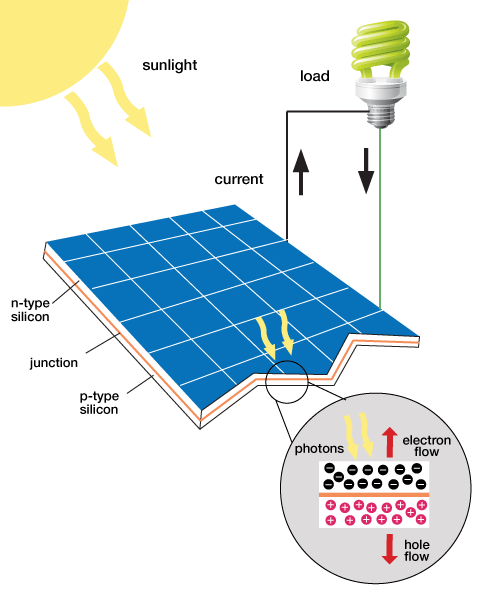

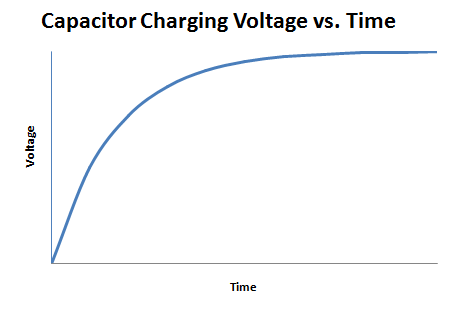
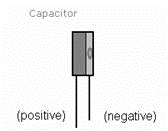





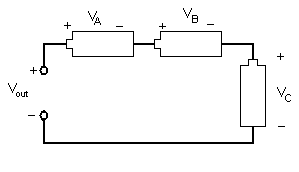

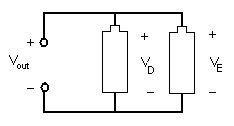
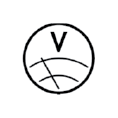

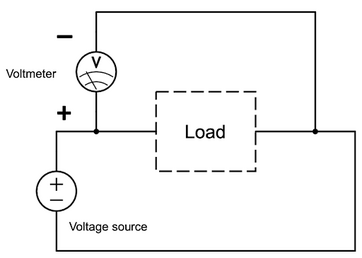
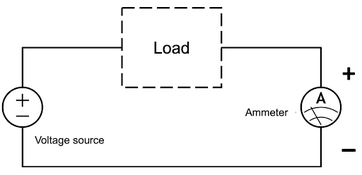

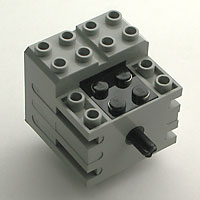
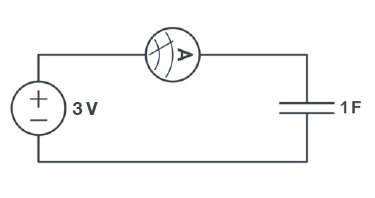
![{\displaystyle CR={\frac {Distance\left[{\text{ft}}\right]}{1\left[{\text{s}}\right]+Time\left[{\text{s}}\right]}}\times {\frac {100}{Cost\left[\$\right]}}+Distance\left[{\text{ft}}\right]\,}](https://wikimedia.org/api/rest_v1/media/math/render/png/15b9dfef143095692899170aca3a108aee2993a1)